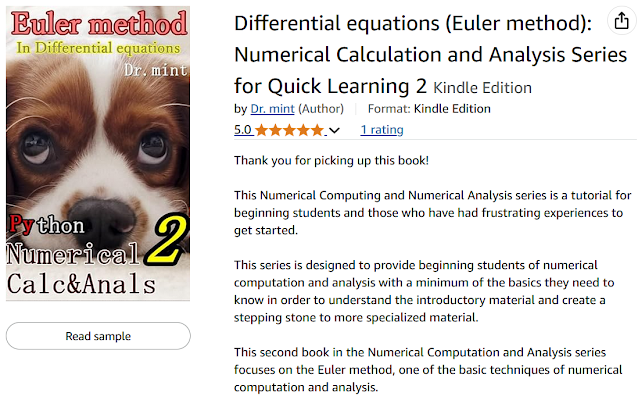Here’s an in-depth blog post introducing the fundamentals of the Euler method, its practical applications, and the benefits of learning it.
The Euler method is a simple yet profound numerical solution technique, particularly attractive for its ability to easily handle difficult-to-analyse differential equations.
1. What is the Euler Method?
The Euler method is the most basic numerical method for approximately solving initial value problems.
It approximates the evolution of a differential equation using linear approximations at small time steps, thereby determining the progression of the continuous solution in stages.
While intuitive and easy to understand, the Euler method is prone to error if the step size is too large. Therefore, setting a sufficiently small step size is crucial for achieving adequate accuracy.
This method is also used as an introduction to numerical analysis and serves as a bridge to more advanced algorithms, such as Runge-Kutta methods.
2. Where is it Used?
Due to its simplicity and intuitive algorithm, the Euler method is widely used in various fields. Specific applications include:
- Engineering and Physics Simulations:
In simulating the dynamic behaviour of machines and structures, the motion of falling objects, and vibration analysis, the Euler method is used to represent the time evolution of dynamic systems in stages. It can also be used in the initial stages of video simulations or as a benchmark for more complex numerical methods.
- Control System Analysis:
In scenarios where approximate solutions are required in real-time, such as in automotive and robotic control systems, the Euler method is employed as one of the possible approaches due to its simple update formula.
- Numerical Analysis Introduction in Education:
The Euler method is an excellent teaching tool for understanding basic concepts such as error and the importance of step size in numerical solutions, as its concepts are easy to grasp. It is often adopted as the first step for students to learn numerical solutions for differential equations, bridging the gap between theory and practice.
- Simple System Prototyping:
In the initial stages of simulation environments and prototype development, the Euler method can be used before implementing more complex numerical solutions to grasp the overall behaviour of the system and aid in idea validation.
3. What are the Benefits of Learning It?
Learning the Euler method offers numerous benefits:
1. Improved Foundation in Numerical Analysis:
Through the Euler method, you can understand the general properties of differential equations and the fundamental concept of discretising continuous phenomena. This deepens your understanding of more advanced numerical techniques and control algorithms.
2. Acquisition of Intuitive Problem-Solving Skills:
The simple update formula allows even beginners to experience the time evolution of dynamic systems through self-calculation or programming, intuitively learning about computational errors and the importance of step size selection.
3. Practical Application of Simulation Technology:
Many simulation software packages implement methods derived from the Euler method as their initial algorithms. This provides a foundation for learning how to select and improve appropriate numerical solutions in system modelling and simulation environments.
4. A Stepping Stone to Continued Learning:
Mastering the Euler method is an important step towards learning more advanced numerical solutions (higher-order Runge-Kutta methods, adaptive step methods, etc.). Understanding the simple method provides a basis for comparing the mechanisms, advantages, and limitations of algorithms that pursue greater accuracy.
In Conclusion
The Euler method is a crucial technique in numerical analysis, serving as an introduction to solving initial value problems for differential equations using a simple update formula.
Its intuitive algorithm and wide range of applications make it valuable in engineering, physics, control system simulations, and as a foundational learning tool in education.
Learning it deepens your understanding of how to capture continuous phenomena discretely, and the trade-offs between computational accuracy and efficiency, making it extremely useful as a stepping stone to more advanced numerical solutions.
If you're interested in learning the Euler method, we recommend this book (access here).

コメント
コメントを投稿